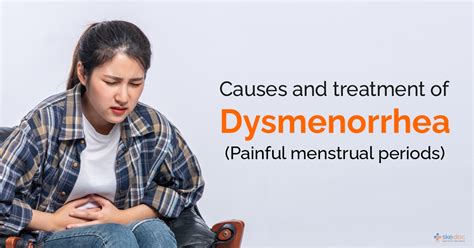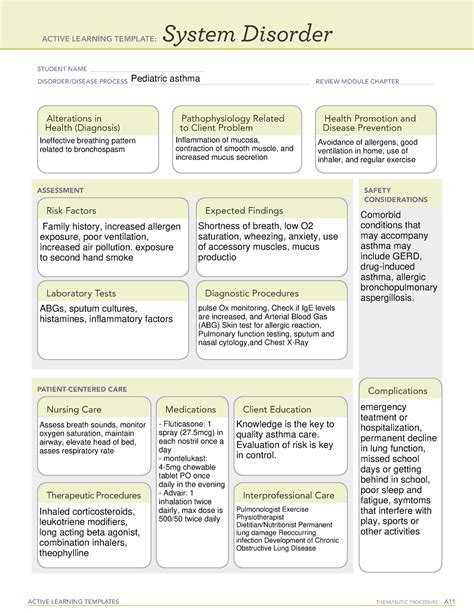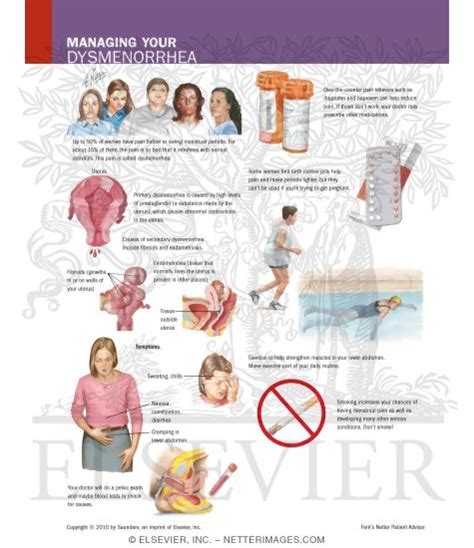Intro
Dysmenorrhea relief: Manage painful periods with natural remedies, hormonal treatments, and lifestyle changes, alleviating menstrual cramps, heavy bleeding, and discomfort, for a healthier menstrual cycle.
Dysmenorrhea, also known as painful periods, is a common health issue affecting millions of women worldwide. It is characterized by severe abdominal cramps, lower back pain, and other symptoms that occur during or just before menstruation. The pain and discomfort associated with dysmenorrhea can be debilitating, impacting daily activities, work, and overall quality of life. Understanding the causes, symptoms, and treatment options for dysmenorrhea is essential for women to manage their condition effectively and seek medical attention when necessary.
The prevalence of dysmenorrhea is staggering, with up to 90% of women experiencing some degree of menstrual pain during their reproductive years. Despite its commonality, dysmenorrhea is often underreported and undertreated, leaving many women to suffer in silence. The impact of dysmenorrhea extends beyond the individual, affecting relationships, productivity, and overall well-being. As such, it is crucial to raise awareness about dysmenorrhea, promote education, and encourage open discussions about women's health.
The experience of dysmenorrhea varies from woman to woman, with some experiencing mild discomfort and others suffering from severe, debilitating pain. The symptoms of dysmenorrhea can include abdominal cramps, lower back pain, nausea, vomiting, diarrhea, headaches, and fatigue. These symptoms can be intense and overwhelming, making it challenging for women to manage their daily lives. Furthermore, dysmenorrhea can be a significant source of stress, anxiety, and emotional distress, exacerbating the physical symptoms and creating a vicious cycle of pain and discomfort.
Understanding Dysmenorrhea

To effectively manage dysmenorrhea, it is essential to understand the underlying causes and mechanisms. Dysmenorrhea is primarily caused by the contraction of the uterine muscles, which can be triggered by various factors, including hormonal changes, prostaglandins, and other chemical mediators. Prostaglandins, in particular, play a significant role in dysmenorrhea, as they stimulate the uterine muscles to contract, leading to pain and discomfort. Other factors, such as stress, anxiety, and underlying medical conditions, can also contribute to the development and severity of dysmenorrhea.
Types of Dysmenorrhea
There are two primary types of dysmenorrhea: primary and secondary. Primary dysmenorrhea is the most common form, characterized by recurrent, crampy pain in the lower abdomen, back, and thighs. Secondary dysmenorrhea, on the other hand, is caused by underlying medical conditions, such as endometriosis, uterine fibroids, or pelvic inflammatory disease. Understanding the type of dysmenorrhea is crucial for developing effective treatment plans and managing symptoms.Treatment Options for Dysmenorrhea

Fortunately, there are various treatment options available for dysmenorrhea, ranging from lifestyle modifications to medical interventions. Lifestyle changes, such as regular exercise, stress management, and dietary modifications, can help alleviate symptoms and improve overall health. Over-the-counter pain relievers, such as ibuprofen and acetaminophen, can also provide relief from menstrual cramps and discomfort. In more severe cases, prescription medications, such as birth control pills or gonadotropin-releasing hormone (GnRH) agonists, may be necessary to manage symptoms.
Alternative Therapies for Dysmenorrhea
Alternative therapies, such as acupuncture, herbal supplements, and heat therapy, have also been shown to be effective in managing dysmenorrhea symptoms. Acupuncture, in particular, has been found to reduce pain and improve quality of life in women with dysmenorrhea. Herbal supplements, such as ginger and turmeric, have anti-inflammatory properties that can help alleviate pain and discomfort. Heat therapy, including warm baths and heating pads, can also provide relief from menstrual cramps and discomfort.Managing Dysmenorrhea

Effective management of dysmenorrhea requires a comprehensive approach that incorporates lifestyle modifications, medical interventions, and alternative therapies. Women with dysmenorrhea should prioritize self-care, engaging in activities that promote relaxation and stress reduction, such as yoga, meditation, and deep breathing exercises. Regular exercise, including aerobic and strength-training activities, can also help alleviate symptoms and improve overall health. Additionally, women with dysmenorrhea should maintain a healthy diet, avoiding triggers that can exacerbate symptoms, such as caffeine and sugar.
Seeking Medical Attention
While many women with dysmenorrhea can manage their symptoms effectively, some may require medical attention. Women who experience severe, debilitating pain, heavy bleeding, or other concerning symptoms should seek medical attention promptly. A healthcare provider can help diagnose underlying conditions, develop a personalized treatment plan, and provide guidance on managing symptoms. Furthermore, women with dysmenorrhea should schedule regular check-ups with their healthcare provider to monitor their condition and adjust their treatment plan as needed.Conclusion and Next Steps

In conclusion, dysmenorrhea is a common and debilitating health issue that affects millions of women worldwide. Understanding the causes, symptoms, and treatment options for dysmenorrhea is essential for women to manage their condition effectively and seek medical attention when necessary. By prioritizing self-care, incorporating lifestyle modifications, and seeking medical attention when needed, women with dysmenorrhea can alleviate symptoms, improve their quality of life, and regain control over their health.
We invite you to share your experiences and thoughts on dysmenorrhea in the comments below. If you have found effective ways to manage your symptoms or have questions about dysmenorrhea, please don't hesitate to reach out. Additionally, if you know someone who may be struggling with dysmenorrhea, consider sharing this article with them to help raise awareness and promote education about women's health.
What is dysmenorrhea, and how common is it?
+Dysmenorrhea, also known as painful periods, is a common health issue affecting up to 90% of women during their reproductive years. It is characterized by severe abdominal cramps, lower back pain, and other symptoms that occur during or just before menstruation.
What are the primary causes of dysmenorrhea?
+The primary causes of dysmenorrhea include hormonal changes, prostaglandins, and other chemical mediators that stimulate the uterine muscles to contract, leading to pain and discomfort.
What are the treatment options for dysmenorrhea?
+Treatment options for dysmenorrhea include lifestyle modifications, over-the-counter pain relievers, prescription medications, and alternative therapies such as acupuncture and herbal supplements. The most effective treatment plan will depend on the individual woman's needs and the severity of her symptoms.
